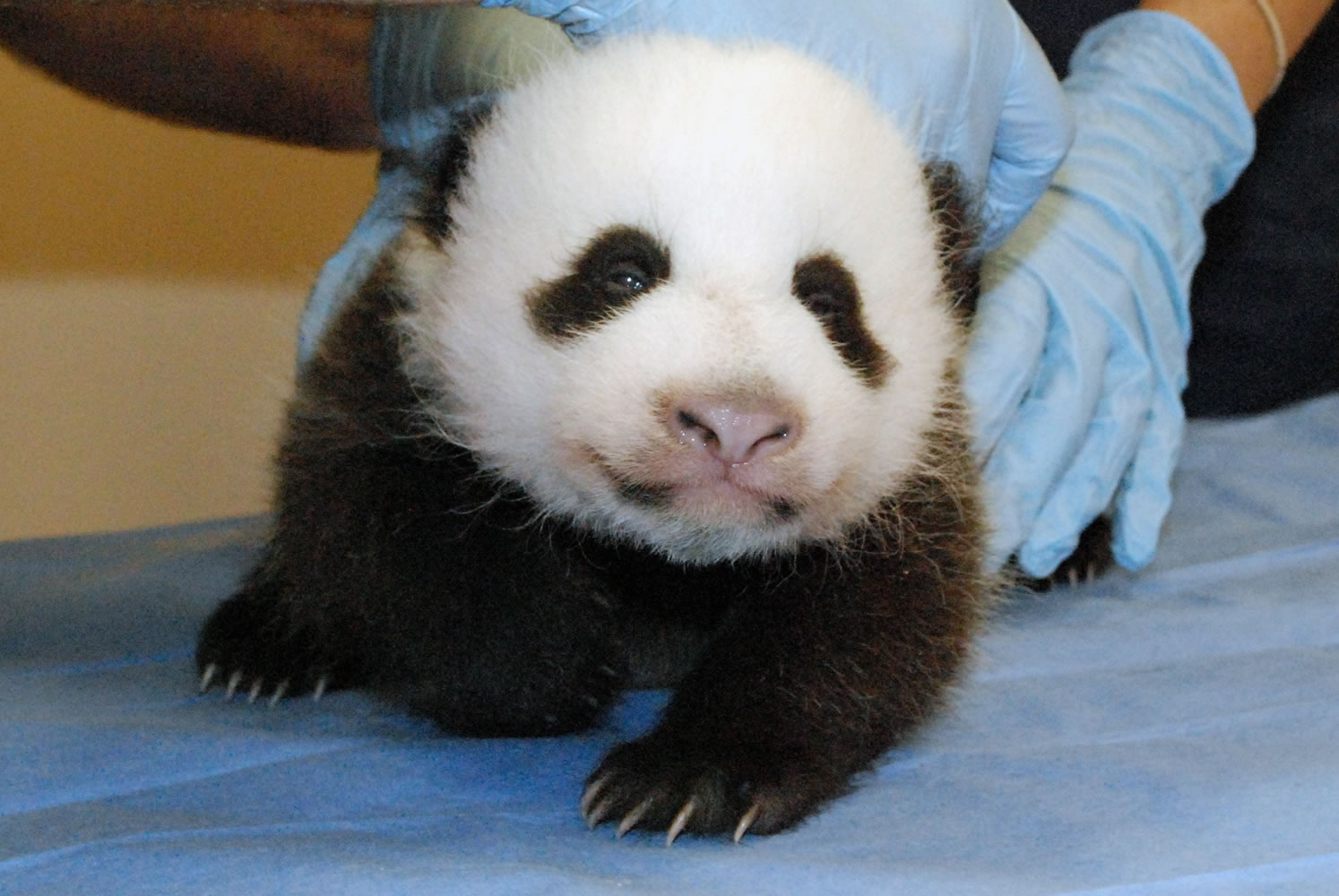WASHINGTON — Sophie, the gregarious California sea lion, seemed to miss visitors.
The flamingos got used to the solitude.
And Siete, the maned wolf — he of the repellent odor — took to howling at unusual times.
Officials at the Smithsonian’s National Zoo said Friday that there were subtle and not-so-subtle changes for the animals during the 17 days it was closed because of the government shutdown. Some believe that the absence of human beings had an impact.
But did the animals miss us?
Do we need to think they missed us?
Perhaps they didn’t care.
While we were gone, there were two deaths and one departure, and a pair of lions mated.
Three elephants took an important walk.
And the 8-week-old giant panda cub grew from 3 pounds to 5.
The zoo reopened at 10 a.m. Friday to a mob of eager visitors who had started gathering an hour beforehand to participate in the return of one of the most visible signs of the government shutdown.
A person wearing a panda costume, along with members of the Friends of the National Zoo with faces painted to look like pandas, greeted the waiting crowd.
With television cameras rolling and dozens of sign-carrying zoo staffers poised to greet the throng, zoo director Dennis Kelly stood with a red and white bullhorn and looked at his watch as the moment approached.
“OK, everybody: Let’s do a countdown!” he called out at the main entrance. And as the crowd chanted “Three! Two! One!,” he slid open the black metal gate that is flanked by two giant statues of lions.
Bystanders cheered, and scores of people pushing baby strollers and clutching coffee surged in.
Soon, the zoo again echoed with the sounds of crying children and the lectures of zookeepers. And the aroma of popcorn drifted through the air.
“We are so excited to be back here,” Kelly said. “It’s been a hard 17 days. The animals have missed the people. The staff has missed the folks. We can’t do our mission of saving species without our visitors coming.”
The zoo, part of the federally funded Smithsonian Institution, had been closed since the shutdown began Oct. 1.
Officials said the hiatus seemed to have affected animals in different ways.
Don Moore, associate director of animal-care sciences, said it was hard to say if some animals missed people. “We missed people,” he said of the staff.
Sophie, the sea lion?
“I think you could probably, safely say (she) missed people,” he said. “She’s very, very human-oriented, and she’s been looking for people,” he said. “I would go walking down there, and she would just follow me around the entire exhibit. And I’m not even one of her keepers.
“The maned wolf was howling during the day, instead of the evening,” he said. “I guess you could interpret that as, ‘Well, there’s nobody else around, so it’s safe to do this.’ I don’t know what the maned wolf is thinking.”
The maned wolf, native to South America, is famous for its heavy skunklike odor.
The flamingos seemed to get used to the quiet of the shutdown and then would become agitated when staff members walked by.
During the shutdown, there were some deaths at the zoo.
Sable, a large Aldabra tortoise about 100 years old, had been suffering from renal failure and an upper respiratory infection. She had been at the zoo since 1956 and died Oct. 7 in the zoo’s veterinary hospital.
Friday morning, zookeepers found one of its two new wrinkled hornbills, a female, dead in the Bird House. The birds are endangered, and the zoo had just taken in a pair.
The zoo’s Asian elephants took a giant step: For the first time, the three females — Ambika, Shanthi and newcomer Bozie — went for a stroll together along the zoo’s elephant walk. Bozie recently joined the herd and is still getting acclimated.
And the unnamed giant panda cub expanded in size, fur and popularity.
The zoo’s Internet panda cams, which show live feeds from the panda compound, have been deluged since being back online Thursday. The Web feed, which shows the cub with her mother, Mei Xiang, can host 850 viewing slots for each of the two cameras. To ensure access for the maximum number of people, viewers can watch for only 15 minutes at a time.



